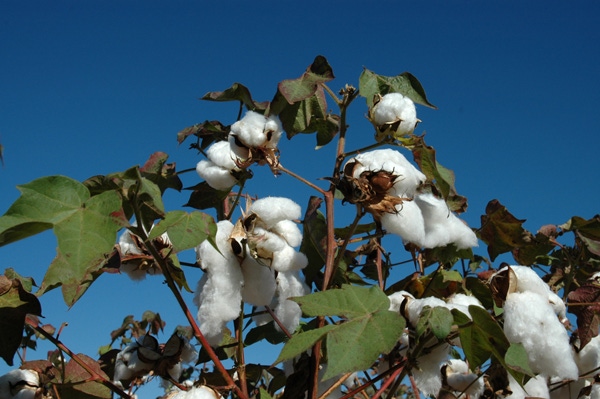November 4, 2010

Tillman County, Okla., farmer Roger Fischer, who farms near Frederick, says growing conditions in 2010 made him appreciate cotton's persistence to keep growing, no matter the conditions.
"Our dryland cotton went through a long, dry period that effectively stopped its production," he said. "In late summer and early fall, we received a lot of rain, which made it start growing again.
"Continued moisture kept the crop loading up with bolls. When we would like to be harvesting mature cotton, we see plants with green, immature bolls at the bottom of the plant."
Fischer says sometimes persistent growth habits can be too much of a good thing. Even when cotton producers have applied growth regulators and/or defoliants to allow harvesting, a lot of the crop still has small, green bolls.
"Every season has something different to contend with," Fischer said. "We are fortunate to be harvesting a good cotton crop this year, but you have to be able to deal with different developments each year to be successful in harvesting a crop."
Fischer was running two harvesters and two module builders south of Frederick on the day of this interview.
Good Yields
"I have harvested about 25 percent of my cotton," he said. That includes 1,700 acres of dryland cotton this year. One field yielded 600 pounds of cotton per acre.
Fischer plants several cotton varieties each year to see how they perform on his land. This year, he has Deltapine, Stoneville, and FiberMax varieties. More specifically, he has DP935, Stoneville 4288 andDP1044, all Roundup Ready, Bt varieties. "The 1044 variety is doing a good job for me," he said.
"I believe this will be an average to good cotton year for me. Weather conditions were certainly good when we planted in the spring, but the long, dry spell in July and August set the crop back. Fortunately, we started getting rain in late August and September to get the crop back on track.
Right now, I still have to contend with some green bolls even if the plants have open, mature cotton ready to harvest."
Fischer planted his first crop in 1976. His father, Joe Fischer, Jr., who is 83 years old, still farms. A lifetime wheat farmer, he has never planted cotton.
"Just this year, I helped him do some farming," Fischer said. "That is the first cotton grown on his farm in decades."
No-till disciple
Roger has been a dedicated no-till farmer since 2000 and hasn't used a plow since. "If you start no-till farming, you have to be patient," he said. "The benefits of no-till take awhile to see. You have to let the soil rebuild its nutrients over time. Eight to 10 years isn't too long for a farmer to wait to get solid returns from no-till."
Along with cotton, Fischer produces wheat, millet, hay and corn in rotation. He also has a commercial cow herd.
Fischer takes his cotton to the Red River Gin, owned by the Tillman Producers Cooperative at Frederick.
David Lingle, gin manager, says the gin has processed 5,700 bales to date. "We have a really good crop of cotton this year," he said. "About the only problem our farmers have had to deal with is cotton is still putting on green bolls.
"Modern cotton varieties with disease resistance and ability to produce high-quality cotton are giving growers the best product we have ever had," he said.
A small supply of cotton worldwide and high demand for its fiber by mills and clothing manufacturers have produced top prices for cotton this year.
"Some cotton has been sold for $1.38 per pound," Lingle said. "Anticipating this, cotton growers planted about 15 percent more acres this year. We have a good crop and a lot more acres to harvest. But many farmers have gone with their cooperatives to allow them to sell their cotton.
"Not anticipating prices this high, cooperatives pool their members’ cotton and typically sell a portion of it at different times of the year when demand is highest. Our marketing cooperative, Plains Cotton Cooperative Association at Lubbock, Texas, represents growers in North Texas, Oklahoma and Kansas."
PCCA members have approximately 25 percent of their cotton in a pool, he said. As of early November, PCCA had only 4,362 bales of cotton available for the current high prices.
You May Also Like




